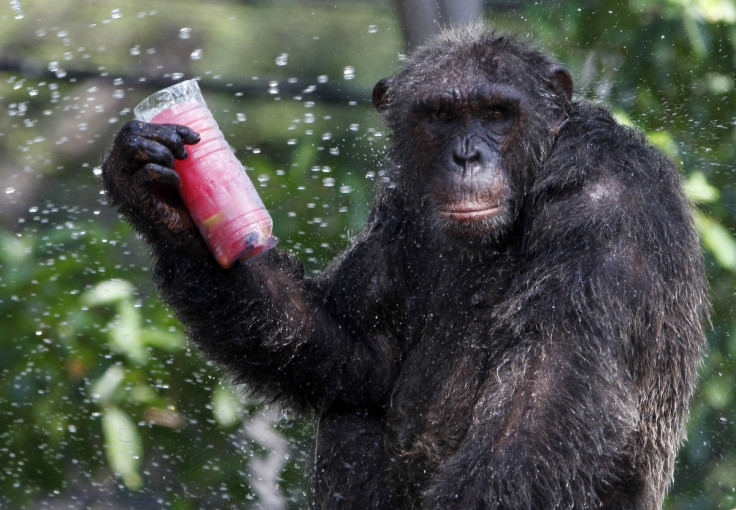Smart Chimpanzee 'Mega-Culture' Found in Virgin Forests of Congo [Video]

A new "mega-culture" of chimpanzees in the Democratic Republic of Congo has been discovered by researchers. The unusually large group of apes is spread over at least 19,305 sq miles, and probably represent the largest population of chimps spread over an extensive habitat.
Various unusual features of the ape subspecies came to light in the study published in the journal Biological Conservation.
Video cameras were planted in the forest to record their movements and lifestyle. Eight months of footage unfolded many captivating instances including scenes where mothers teach their young to hunt for insects by using tools, and gangs of males guarding their territory.
The chimps, big in size, were seen feasting on a leopard, though it was not clear if they had preyed on the leopard or were simply eating its carcass.
They were also seen gorging on giant African snails which they killed by pounding the shelled molluscs open on rocks or logs.
Ground nest building practice was more frequent among these atypical chimps than in any other of their evolutionary cousins, even as they used large sticks up to 2.5 metres as tools to catch insects, to primatologists' surprise.
"Fascinatingly, we found that these chimpanzees share similar behaviours across a huge area: they make a lot of ground nests, like gorillas, they pound open termite mounds, fruits and giant snails on buttresses and they use very long tools (up to 2.5 metres) to dip for ants," Cleve Hicks, study co-author from Max Planck Institute in Leipzig, Germany, told The Huffington Post.
Most strikingly, this subspecies of apes comprising thousands of chimps spread over a large area, seem to share a unique set of customs and behaviours.
"This population of chimpanzees is extremely important, as they form what appears to be a large, continuous population spread out over [about 19,305 sq miles]," Hicks noted.
The research covers a survey done over a period spanning six years, beginning in 2004, when the primatologists first discovered the "mega-culture" while exploring the forest for new chimp sightings in the Bili-Gangu region.
The researchers documented the chimpanzees for the first time as the area was particularly untouched by native poachers and hunters.
However, this seclusion afforded by nature may not last long as bushmeat hunters vie to cover new ground to meet commercial demand for chimp meat.
"Increasing numbers of bushmeat carcasses and chimpanzee orphans were found in Bili and nearby areas," Christophe Boesch, another study co-author said in a media release.
"Without proper protection these chimpanzees may succumb to the same factors that are eliminating populations of the species elsewhere."
© Copyright IBTimes 2025. All rights reserved.





















